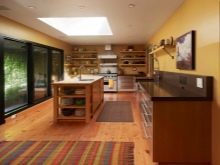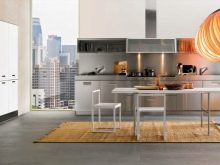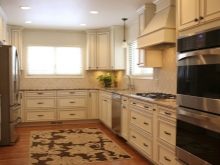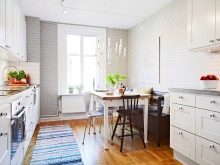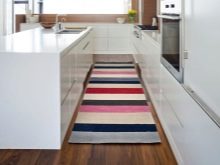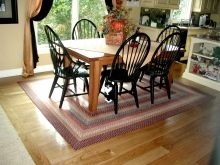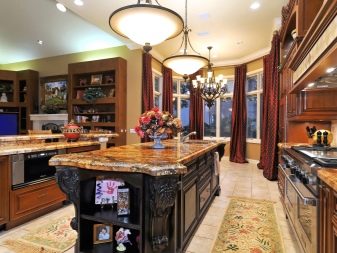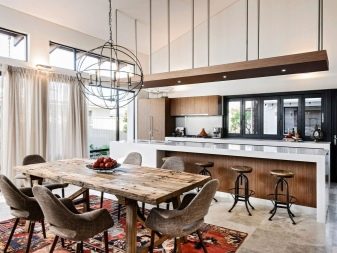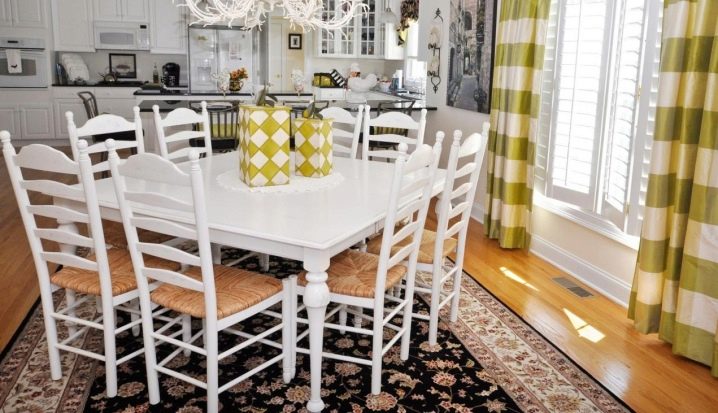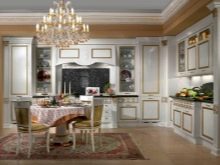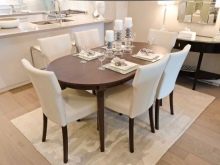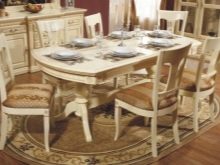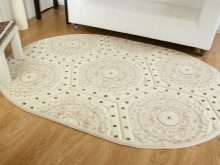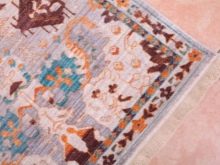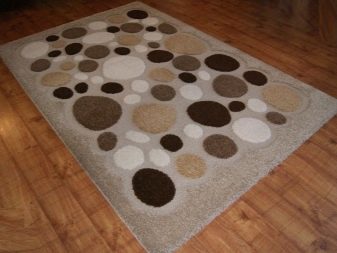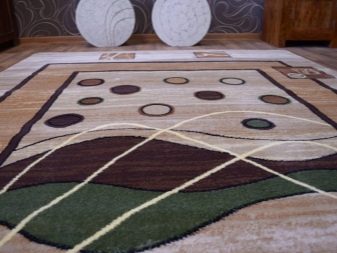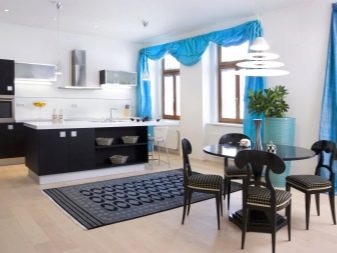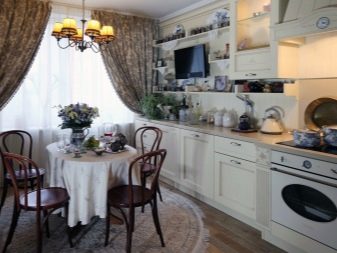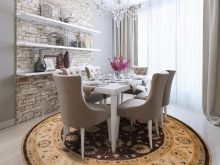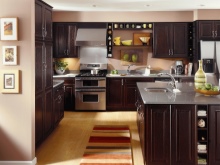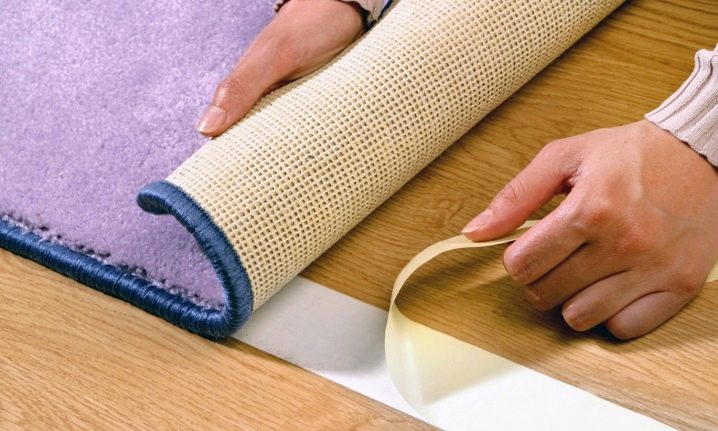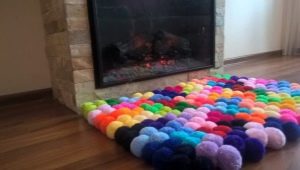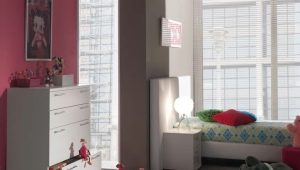Carpet to the kitchen
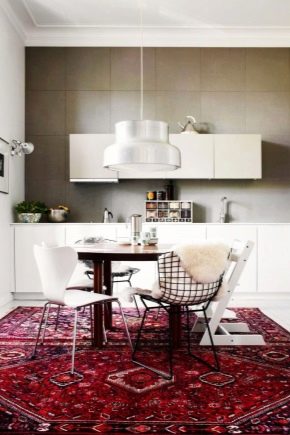
For many, the question is whether a carpet in the kitchen is necessary, it is doubtful. At first glance, it seems undeniable that this object in the room, where something constantly falls and spills on the floor, will deliver only additional trouble to the hostess. In addition to washing floors, carpet cleaning will also be added.
Special features
In fact, everything is not so critical, because the carpet in the kitchen, in addition to the aesthetic function, is able to solve a number of practical problems, and the right choice will help you to minimize drawbacks.
Arguments in his favor:
- If your kitchen has a cold tile floor, the carpet can literally and figuratively make it warmer and more comfortable and muffle the sounds.
- In a studio apartment or simply in a large kitchen, this decor item can become an original means of zoning a room: it can be used to isolate the dining area or to separate the work area from the rest of the space.
- The kitchen is a place where people often go.If the floor is worn out and has lost its appearance, and repairs for some reason are not soon, the carpet can play the role of its pretty disguise.
- Carpeting protects the surface of the floor from damage in case of falling objects or dents and scratches from the legs of the table and chairs.
- This object in the interior of the kitchen can visually change its size, which is especially important in small rooms.
- The carpet will help to make the design of the kitchen room original and stylish.
Carpet in the kitchen will look appropriate:
- At the sink;
- Along the working area;
- In the eating area.
Such options are most common, but, of course, you can have your own, because when choosing a place for a carpet, you need to take into account the size of the room and how the furniture is arranged there.
The size
The right choice of size and shape of the carpet is of great importance in the general sense of order and harmony in your kitchen. So, in a small room too large carpet would be inappropriate, one or several small rugs or mats would fit harmoniously into it. And, on the contrary, in a large room there is a place where imagination can be roamed: you can lay one large or several rugs of different sizes, united in style.
If you want to use the carpet to highlight the dining area, keep in mind that its parameters should be larger than the size of the table by at least 60-70 cm on each side so that you can freely move the chairs.
Choose a place where you would like to lay the carpet, and with the help of scotch tape, make the outline of its outline on the floor in the most suitable parameters. Measure the resulting length and width.
When you go shopping, you will know its approximate dimensions and are sure that later you will not have to move furniture or trim the carpet.
The form
In order for the carpet to fit organically into the overall interior, the choice of its shape must take into account the configuration of the dining table or room. For example, a square or round carpet is more suitable for a square room, and an oval-shaped model for a rectangular kitchen that is elongated in length. This principle must be followed in the selection of carpet for the dining area: the carpet is ideal if it repeats the shape of the table. Although possible options:
- Under the round table - a round or square carpet;
- Under the rectangular table - the carpet is the same or oval;
- Under the oval table - rectangular or oval cover.
Material
To care for the carpet in the kitchen gave you as little trouble as possible, you need to consider properties of the material from which it can be made:
- Wool - material is natural, hygienic and durable. She has excellent sound insulation qualities. Wool carpets are soft, warm and cozy, it is pleasant and useful to walk barefoot on them. Wool carpet is easy to clean, washable and does not shrink. Disadvantages - such carpets easily absorb moisture (which means that the spots from the spilled liquid will be harder to clean), dry for a long time and have a high cost.
- Cotton, jute, sisal, flax, bamboo and viscose - for connoisseurs of natural materials. They are hygienic, wash well and dry quickly. They are often used for the production of lightweight and practical mats (mattes). Products from these materials are light and affordable.
- Polyester - fiber of synthetic origin, in appearance and in quality characteristics similar to wool. It is dirt-resistant material, products from it are durable, easy to clean, do not fade, resistant to dirt and mold.Non-greasy stains from their surface are easy to remove, but oily stains can remain forever if left to be processed for later. One more minus - polyester is badly restored after deformation.
- Polypropylene (dekolan, ikselan). Carpets from this material do not absorb moisture at all, so everything spilled is easily removed from the surface. They resist dirt and fading well, do not electrify and do not cause allergies, and are affordable.
- Acrylic - high-quality synthetic fiber. Products made of acrylic is difficult to distinguish from wool. They have a number of advantages - they have dirt-repellent properties, do not absorb moisture, are resistant to the action of mold, and are easy to clean. This is a good option for allergies, they almost do not absorb dust. Carpets of acrylic have bright and saturated colors, as these fibers are painted better than others and do not fade. A significant minus for use in the kitchen - fatty contaminants are extremely poorly cleaned, in addition, with frequent use, the material rolls down, which spoils the appearance of the products.
- Flatviva - material from more perfect polypropylene.Flatv mats are very good: they produce a massage effect if you walk barefoot on them. This is achieved by interlacing threads of different thickness. Mats are beautiful in appearance and easy to care for.
- Composite materials receive, using fibers of a different origin. Due to this, their quality characteristics are improved. For example, a hat-set material is obtained by adding polypropylene to the basic composition. Hat-set carpets do not electrify, they retain color and texture for a very long time.
From the above, we can conclude that carpets made of synthetic materials for the kitchen are more preferable. As a rule, they do not cause allergies, are durable, lightweight, resistant to fire, have dirt-repellent and antistatic properties and have good washable qualities, which greatly facilitates their care. In addition, they do not start the mole and microorganisms. Products from blended materials will also work well.
When buying mats made from natural materials, you should ask whether they are treated with special impregnations (dirt-repellent, insect-repellent, antistatic).
Texture
If you decide to lay a carpet with a long pile on the floor in the kitchen, be aware that you will never completely get rid of the spilled crumbs and dust and will be doomed to their endless cleaning. A lint-free version (mats, carpets, kilims, sumachs), or, in extreme cases, a rug with a very short nap, is best.
It should be noted that the coating with dense smooth weaving will be much easier to clean than a model with a dense, but coarse texture.
Colors
Choosing a coloring, it is necessary to consider several factors:
- It is advisable to avoid light colors, no matter how you like the model. Even small spots will be noticeable on a light background, such a coating will often have to be cleaned. But if you cannot imagine your kitchen without such a rug, choose it from a material that is easy to clean and wash.
- Prefer carpets non-dirty saturated colors. Rugs with a motley pattern are very well suited - spilled crumbs or stains on such a surface will not be so noticeable.
- A narrow room can be visually made wider if you lay a carpet with transverse stripes or a “wave” and, conversely, you should not use such an option in the longitudinal design, since the impression of a narrow space will only increase.
- The shades of the floor covering should echo the hues of other elements of the room design: it can be the color of curtains, kitchen apron, upholstery on chairs, etc. The carpet, like the last puzzle in a puzzle, should combine all the different parts of the interior and create harmony.
- If you have a bright kitchen, you should avoid equally catchy: the carpet should not be another flashy detail that lives its own life. The color solution in this case should be more relaxed and delicate, selected in a suitable range.
- A kitchen in restrained, soothing colors can liven up and become a bright accent of a rug with the texture of active colors (lilac, pink, red, etc.). Stripes, rhombuses or any other geometric pattern made in a similar range will add dynamics and movement and create a cheerful mood.
And if you support it with several kitchen accessories in tone, then it will organically blend into the interior, creating a feeling of celebration even in the most boring kitchen.
A few care tips
To prevent the purchased carpet from slipping on the floor, it is better to fix it with a sticky clamp or double-sided tape.This may not be necessary if the rug has a rubber base.
It is advisable to give preference to dry cleaning, but if you can not do without a wet method, then it is better to do it manually, using non-rigid brushes and special detergents for carpets.
At least once a year, you must dry-clean the product, or, if possible, clean it in the snow. For coatings made from natural materials, it is better to periodically process them with special means of protection against insects.
On how to properly clean the carpet at home, you can learn in the next video.
